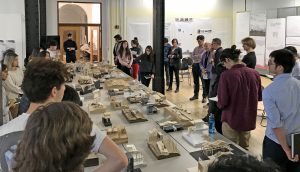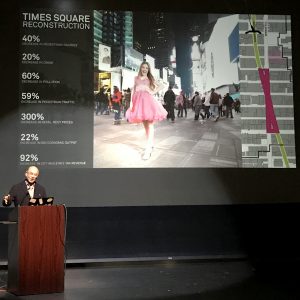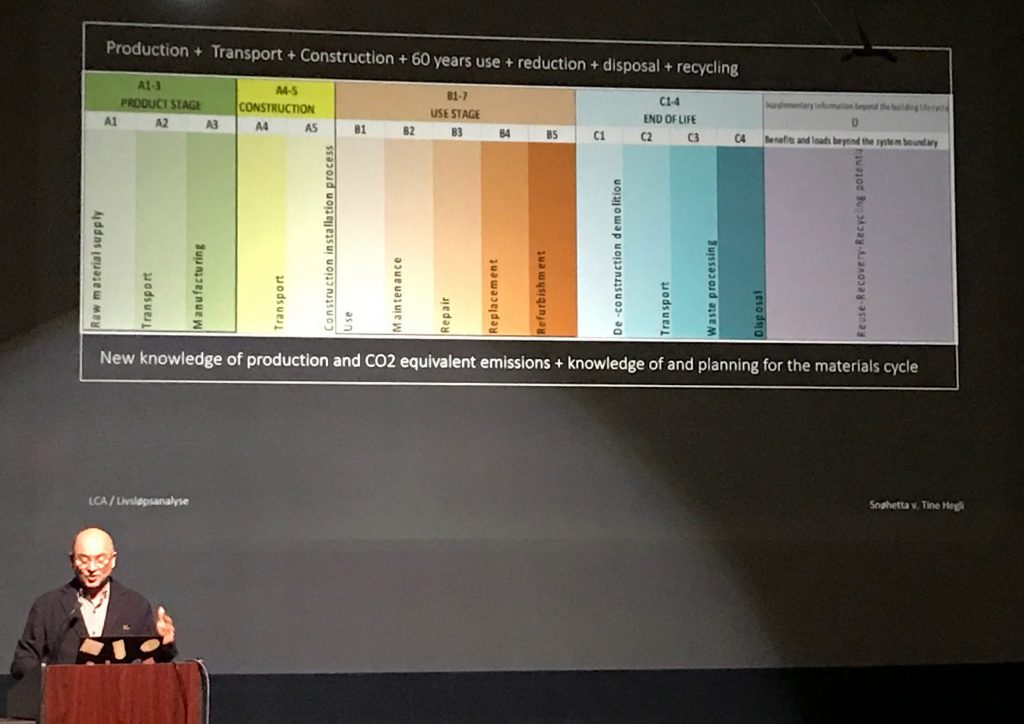On Monday February, 24, Fisher ARCHitecture had the opportunity to overlap with Craig Dykers from Snøhetta twice. In the early afternoon, the co-founder of the Norwegian Architecture firm joined the Final Review of second-year projects (where Bea is teaching as an Adjunct Professor). Then, he gave a lecture to a Kresge Theater full of architecture students from all years.

The title of the lecture, Living in a Zoo of Our Own Design, is a reminder of our impact as architects on the built environment and the society that lives in it. Comparing the example of a Polar bear in a poorly designed zoo to one in a good designed zoo, Mr. Dykers spoke of the physical and psychological consequences to humanity of our man-made environment.
 While the lecture was fast paced and included many – perhaps too many – projects from all over the world, his comments on practicing architecture during the CMU Final Review reminded us the “Slow-Food” movement. He spoke at the review of the need for good quality, clean production, and fair conditions.
While the lecture was fast paced and included many – perhaps too many – projects from all over the world, his comments on practicing architecture during the CMU Final Review reminded us the “Slow-Food” movement. He spoke at the review of the need for good quality, clean production, and fair conditions.
Mr. Dykers reminded the students to take the time to think of the entire project context and ALL the layers of History embedded in every site. He said that “it is not about just copying History” or a style but rather “understanding it”.

He spoke also of materials and sustainability, inviting students to investigate the inherent possibilities of every construction material. He warned of the consequences of using renewable sources like wood, reminding us that they are renewable only if you replace the cut trees with new ones. He emphasized how materials should be used with no waste by optimizing construction methods.
After asking the students about the site program, he invited them to think of programming as a way to give a site a new life and a new meaning, in particular in places where there isn’t much to start with. He believes that what he calls “viscerality” should be a function of buildings and that we should think of how we touch, interact with and feel our buildings as a design opportunity, adding value to our projects. What is viscerality? According to him it is the complete “visceral understanding” of a building’s “materials and building elements”.
Before heading to the lecture hall, he left the students with a reflection on permanence and life cycle of our buildings. “We should not tear down buildings”. If anything we should disassemble them and recycle their components.
Snøhetta is currently involved in a large variety of projects. 280 designers (in many disciplines beyond architecture) are working all over the world. Their focus, according to Mr. Dykers, is paying particular attention to the people, processes and environmental impact of their projects.
While not every Snøhetta project is primarily zero-energy efficient or carbon-neutral, their big idea is to keep exploring every possible way to avoid “climate abuse”. The strength of Snøhetta is the never-ending discussion on this urgent matter.

